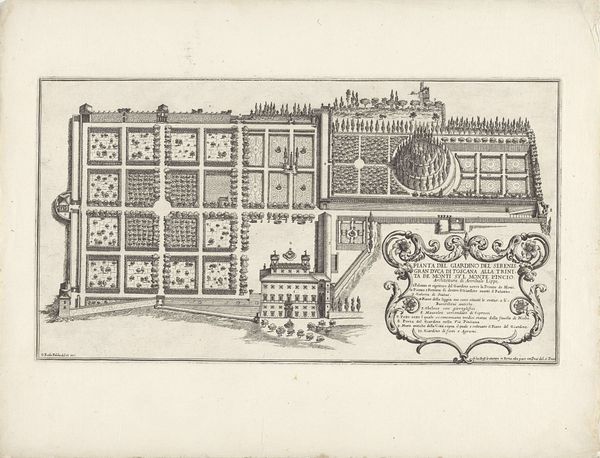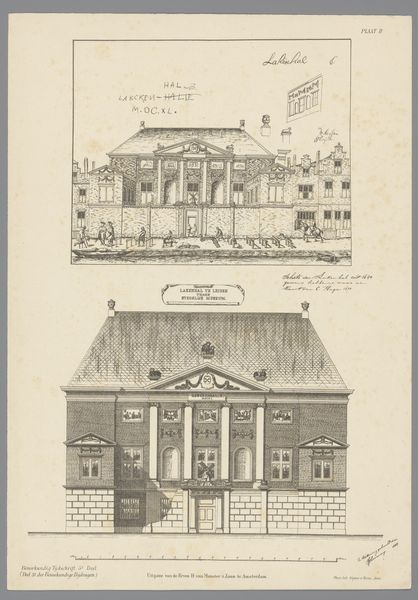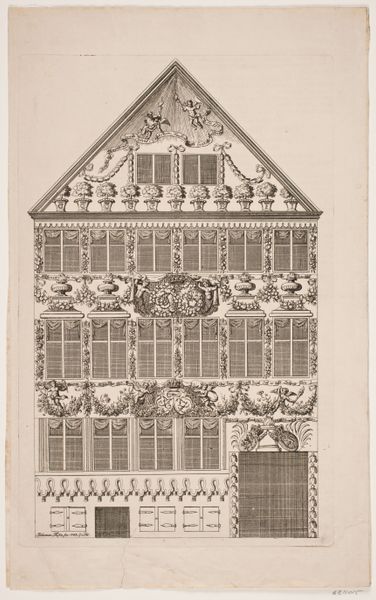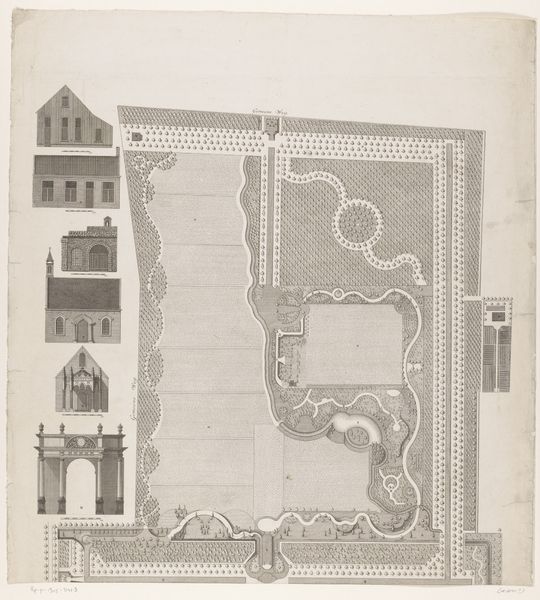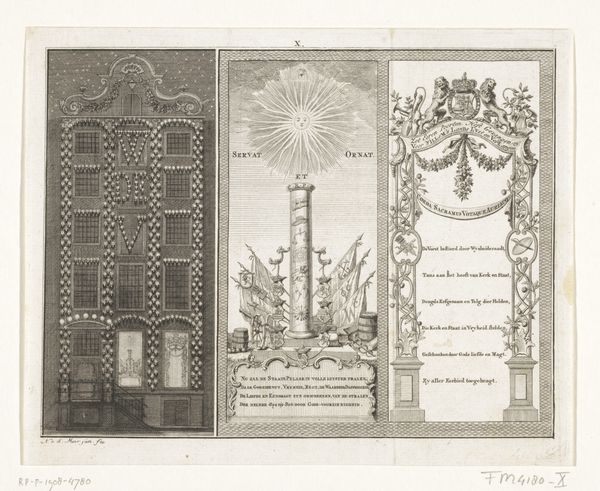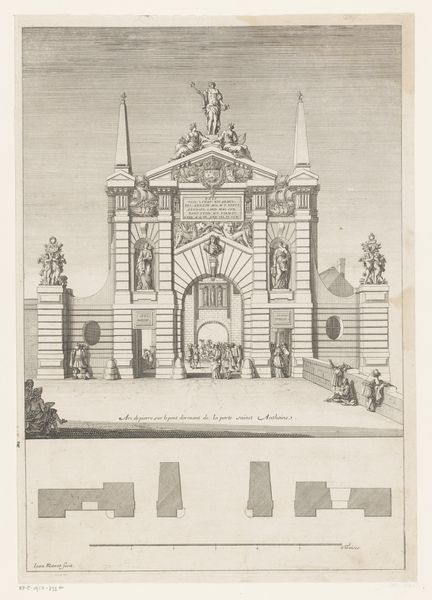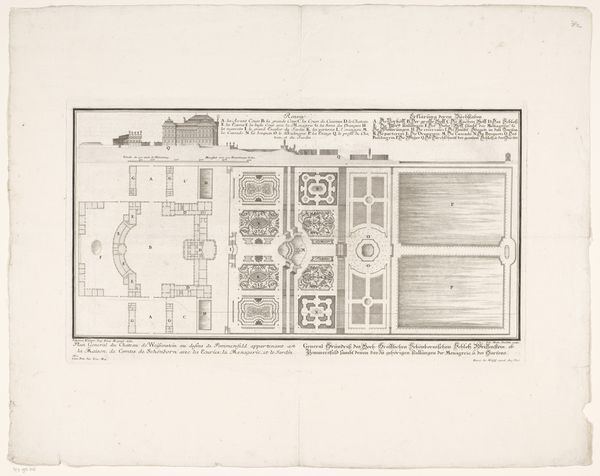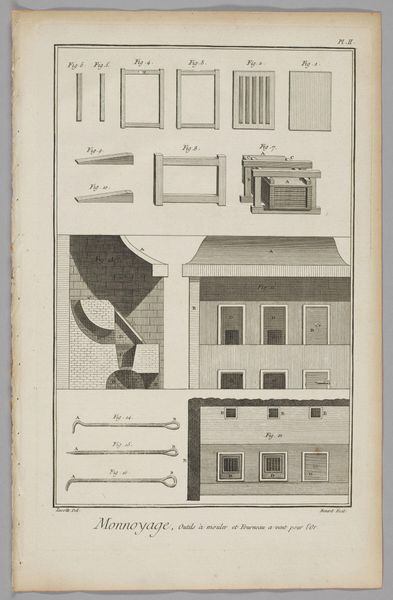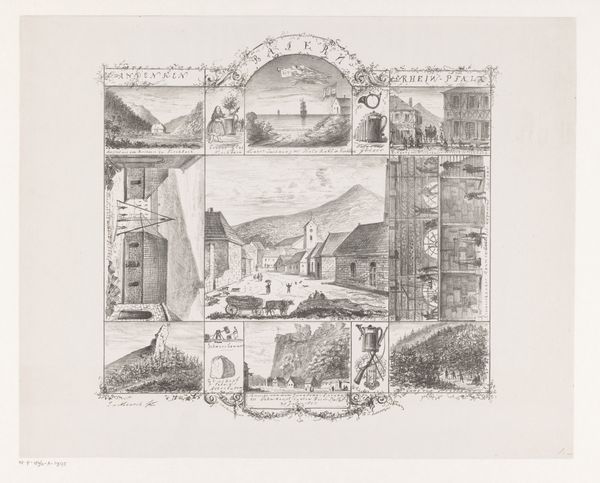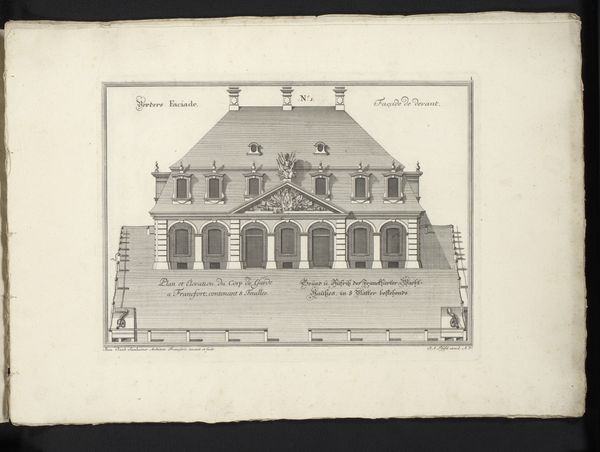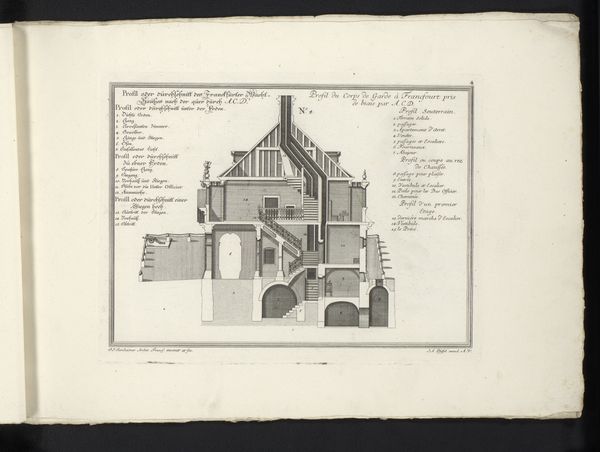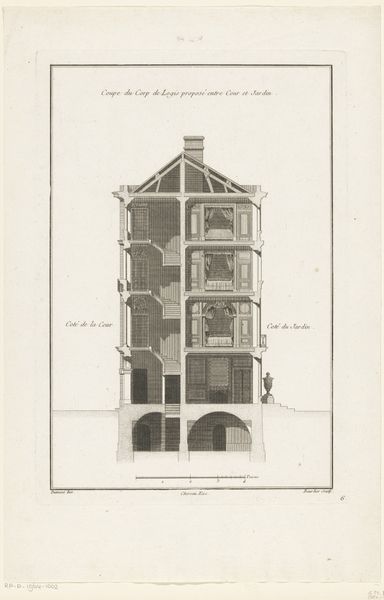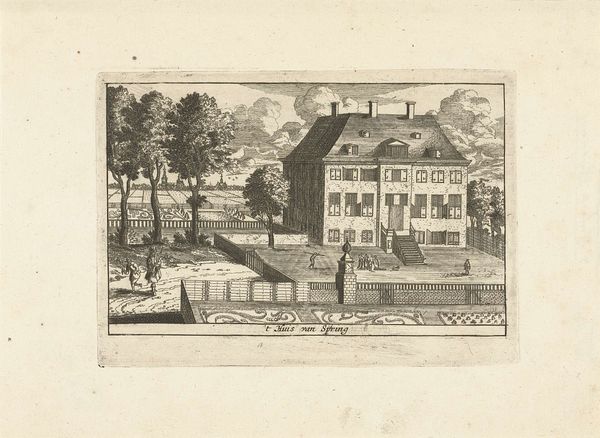
Eerste deel van een plattegrond van Beeckesteijn, met gezichten op de bouwwerken op het landgoed, bestaande uit twee delen 1772
0:00
0:00
casparjacobszphilips
Rijksmuseum
print, etching, architecture
#
neoclacissism
# print
#
etching
#
landscape
#
etching
#
geometric
#
cityscape
#
architecture
Dimensions: height 846 mm, width 625 mm
Copyright: Rijks Museum: Open Domain
Curator: Here we have, from 1772, “Eerste deel van een plattegrond van Beeckesteijn, met gezichten op de bouwwerken op het landgoed, bestaande uit twee delen,” a print created through etching. Editor: What strikes me immediately is the intense geometry and rigidity of the landscaping. It’s meticulously planned, controlled... almost oppressive in its order. Curator: Yes, this rendering reveals so much about land use and ownership, and of course labor. This meticulous layout would have required teams of gardeners, shaping the very earth, and reflects social hierarchies embedded within the production of such estates. We must ask: Who benefits from such aesthetic control? Editor: And how much intervention is needed to sustain it. Thinking purely in terms of composition, notice the contrast between the perfectly straight lines and angles of the gardens, offset by just a few organically shaped areas. Those small circles and curves relieve what otherwise would be too much relentless exactitude. Curator: We should also consider that prints like these were also commodities. This particular print, by Caspar Jacobsz. Philips, existed as both art and document, feeding into a market interested in architectural records, and in the ideals associated with neoclassical design. This resonates deeply within discussions surrounding consumption, accessibility, and the societal roles attributed to images. Editor: Absolutely. Beyond the social aspect, consider how the stark contrast between light and shadow, created by the etching technique, adds depth and a sense of scale to the garden layout. It creates little visual pockets of interest. And if you examine the buildings depicted, the architecture embodies simplicity and balance. Curator: Yes, a balance born from available resources and economic realities of that era, shaped as well by colonial ambition. So, although presented as ordered, "natural," we cannot detach ourselves from the knowledge of exploitation interwoven into these manicured vistas. Editor: Ultimately, this rendering is a fascinating insight into how aesthetics and structure come together, a carefully composed arrangement of geometric forms striving for a balanced and visually satisfying composition. Curator: I agree. This work reveals so much about power, ownership, and labor, if we just remember to look critically at the hands that crafted both the landscape and the print we observe.
Comments
No comments
Be the first to comment and join the conversation on the ultimate creative platform.
